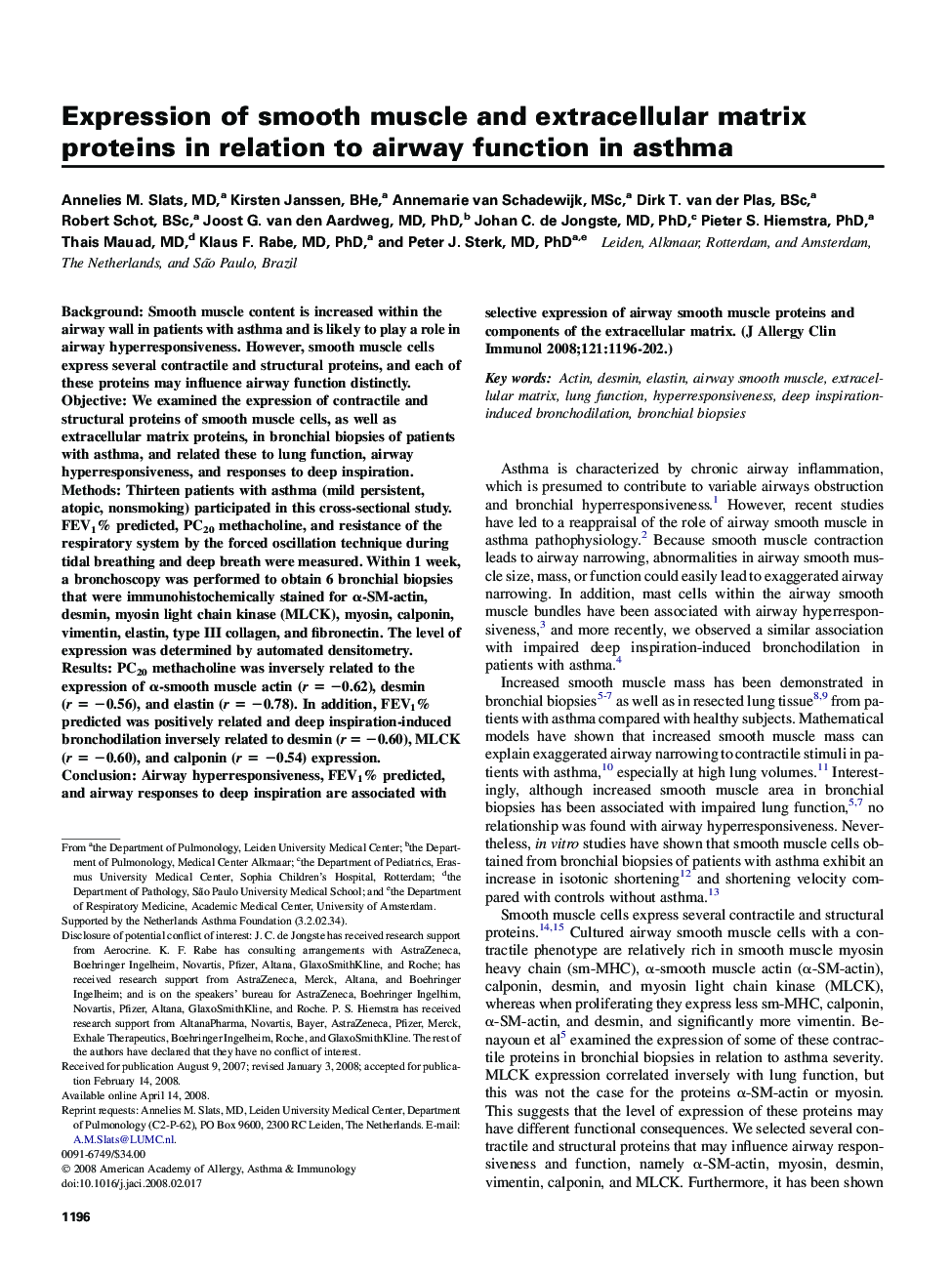| Article ID | Journal | Published Year | Pages | File Type |
|---|---|---|---|---|
| 3201204 | Journal of Allergy and Clinical Immunology | 2008 | 7 Pages |
BackgroundSmooth muscle content is increased within the airway wall in patients with asthma and is likely to play a role in airway hyperresponsiveness. However, smooth muscle cells express several contractile and structural proteins, and each of these proteins may influence airway function distinctly.ObjectiveWe examined the expression of contractile and structural proteins of smooth muscle cells, as well as extracellular matrix proteins, in bronchial biopsies of patients with asthma, and related these to lung function, airway hyperresponsiveness, and responses to deep inspiration.MethodsThirteen patients with asthma (mild persistent, atopic, nonsmoking) participated in this cross-sectional study. FEV1% predicted, PC20 methacholine, and resistance of the respiratory system by the forced oscillation technique during tidal breathing and deep breath were measured. Within 1 week, a bronchoscopy was performed to obtain 6 bronchial biopsies that were immunohistochemically stained for α-SM-actin, desmin, myosin light chain kinase (MLCK), myosin, calponin, vimentin, elastin, type III collagen, and fibronectin. The level of expression was determined by automated densitometry.ResultsPC20 methacholine was inversely related to the expression of α-smooth muscle actin (r = −0.62), desmin (r = −0.56), and elastin (r = −0.78). In addition, FEV1% predicted was positively related and deep inspiration-induced bronchodilation inversely related to desmin (r = −0.60), MLCK (r = −0.60), and calponin (r = −0.54) expression.ConclusionAirway hyperresponsiveness, FEV1% predicted, and airway responses to deep inspiration are associated with selective expression of airway smooth muscle proteins and components of the extracellular matrix.
